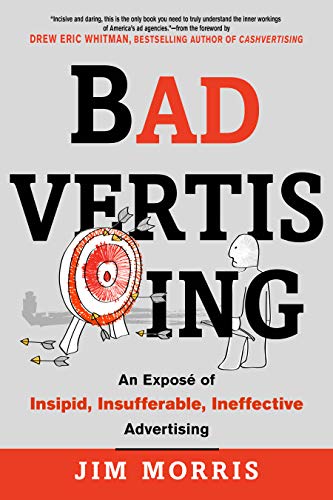No one in the advertising industry ever gets up in the morning and says, “Today, I’m going to create boring, uninspired work people will ignore.” But it happens every day. We all know it, we’ve all done it, and I’ve spent a good part of my career pontificating about the idiosyncrasies of an industry that churns it out. But perhaps no one’s dissected why bad work happens as systematically as “Tagline Jim” Morris does in his new book Badvertising: An Expose of Insipid, Insufferable, Ineffective Advertising.
Morris doesn’t beat around the bush. His introduction starts off: “Bad advertisements — and let’s face it, that’s most advertisements — don’t just create themselves.” From there, he rolls out a series of small essays that pinpoint the various causes of bad advertising. He has creative terms for many of them: “Overthink.” “Negaphobia.” “Devalued language.” “The Metrics Mess.” You get the point. There’s plenty of blame to go around.
Anyone who’s had a career in advertising will recognize, and sympathize with, all the points Morris is making. And yet it’s a book whose examples are stuck in the traditional ad model that’s been ditched in favor of content marketing, social media advertising, brand activations, and mass quantities of minutiae. So it feels a little out of time. It’s almost as if Morris has created the prequel to Bob Hoffman’s consistent, pointed criticism of today’s data-driven, intrusive digital marketing morass.
Still, in these days when we’re all itching to get back down to a bar and trade advertising war stories again, “Badvertising” makes a good companion for the burned out, working-at-home ad professional. Morris has been there, done that, documented it, and attempts to find remedies that might help us prevent making some crappy work. And that’s not a bad idea at all.
Special thanks to Tess Woods Public Relations for providing me with a review copy.




